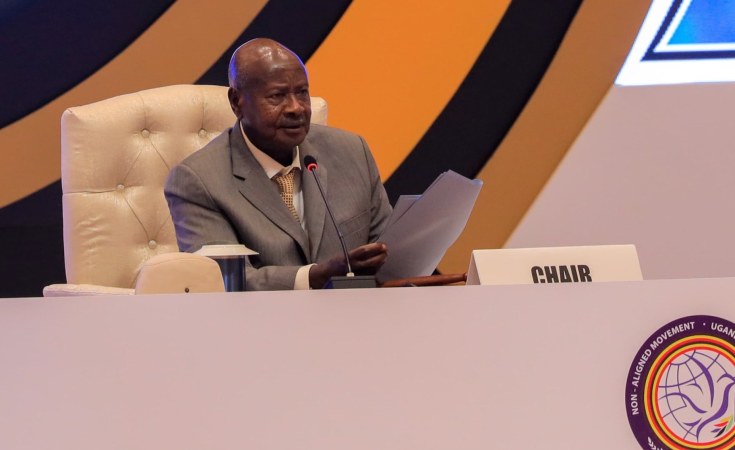Electoral gender quotas in Uganda - first introduced in 1989 - have increased women's numbers in Uganda's parliament to 34%. Today there are 189 women out of 557 members of parliament.
But women politicians in Uganda continue to be restricted to minority representation. They are constantly battling stereotypes that seek to maintain the status quo of male dominance in political spaces. The electorate has additionally grown accustomed to believing that since women have seats reserved for them, they should stay out of the race for open seats.
One of the reasons for this continued marginalisation is that the country's political parties have done little to empower women. Yet they are the first hurdle that women politicians have to clear, not only to get into parliament but to become effective.
The reality is that political party affiliation provides one of the most viable avenues for women's entry into politics - the alternative would be to vie as an independent candidates with no affiliation to a political party. Party support provides the much-needed financial resources for successful campaigning that women are normally unable to access. Political parties therefore act as gatekeepers by determining who gets into political office.
Therefore, women - like men - will tend to gravitate towards a party that can provide the financial resources needed to campaign and get into office. In Uganda, this tends to be the National Resistance Movement. The ruling party has been in power for over 30 years, and because of its popularity and apparent control of state resources, it presents the most viable path to parliament.
I am a scholar of parliamentary politics in Uganda, with a focus on women's participation. In a recent paper, I set out to study the country's political parties to identify women's place in them. I examined the power structures of six of the 26 registered political parties using their documents, such as constitutions, that showed the party structures. I studied the National Resistance Movement, Democratic Party, Forum for Democratic Change, Alliance for National Transformation, Uganda People's Congress and the National Unity Platform.
Read more: Tanzania's political parties have few women in leadership and candidate lists: some solutions
My findings show that political parties have a long way to go to improve the position of women in their ranks. While most political party constitutions have a 40% minimum quota for women's representation in their formal structure, none has made good on this commitment in the nearly two decades that Uganda has been a multiparty state. My study found that women's representation averaged 30% and below.
I also found that Uganda's multiparty arrangement has tokenised women in the political system. Women's presence in political parties is meant to depict a semblance of gender equality. However, there is limited commitment to ensuring that barriers against women's effective political participation are addressed. This significantly "others" women, rather than granting them active participation.
For instance, in Uganda's 2006 election - the first under the country's new multiparty dispensation - the National Resistance Movement, the ruling party, politicised the quota system on the campaign trail. Its leaders emphasised that women owed the party gratitude for helping to increase their involvement in parliamentary politics.
In my view this propagated women's dependency on the regime and painted them as victims of patronage.
Inbuilt inequality
In political parties, unequal gender relations are visible in their structures and processes. The tasks and positions meant for men and women are different. There is a division of labour, with the position of party president, for instance, often the preserve of men, while women deputise them.
In the National Resistance Movement, the second vice-chairperson has always been a woman. The party's overall structure, however, largely remains gendered and focused on men. In its central executive committee, for instance, there is only one woman out of nine members.
Read more: Burundi's quota for women in politics has had mixed results, but that's no reason to scrap it
Party structures also reinforce traditional belief systems when it comes to the acceptable behaviour of a politician. Women's leagues or wings that are meant to advance women's political participation and advocate for women's issues within the party are often used for care or social issues.
The Ugandan case exemplifies the secondary status of women in political parties.
Across my survey, while women's leagues were provided for in the party structures, their duties and rights were not elaborated on. In most cases, their activities were managed and approved by the party executive. They were mainly used for logistical support and to mobilise the women constituency during campaigns. And in cases where party leaders meet only quarterly or twice a year, it's unlikely they would have the time to thoroughly interrogate, or even include, women's issues on the agenda.
Hannah Muzee, Lecturer, Department of Political Science and Public Administration, Kyambogo University


